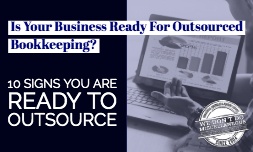In a dynamic industry where change is the only constant, good cash flow management stands as one of the most critical factors for the success of e-commerce businesses. Navigating the online retail waters is often turbulent, with fast-paced transactions and a myriad of financial nuances that demand efficiency and foresight. Poor cash flow management could capsize even the most promising ventures, while a firm grasp on financial inflows and outflows can propel your e-commerce business forward, ensuring not just survival but sustainable growth.
Entrepreneurs in the e-commerce realm face unique challenges that traditional brick-and-mortar stores may not encounter. With no brick walls to confine your potential, e-commerce opens up vast opportunities, yet the vastness often brings complexity in managing the financial tides. Understanding your cash flow and steering it effectively is akin to finding a strong current in the ocean and using it to your advantage.
In this detailed guide, we will unveil the intricacies of cash flow management in e-commerce. By the end of this read, you'll be equipped with strategies to anticipate cash flow hurdles, identify opportunities, and streamline your operations to ensure a healthy financial state.
Understanding Cash Flow for E-Commerce
Cash flow is the lifeblood of any business, and understanding it within the context of e-commerce is paramount.
Defining Cash Flow
Cash flow is the movement of money into and out of your business. It's not just about sales and profits; rather, it encompasses the timing of your expenses and revenue to ensure that there's always enough cash available to cover operational needs.
The Significance of Cash Flow in E-Commerce
E-commerce businesses operate in an environment where cash can be tied up in inventory, shipping, and refunds, often with cycles shorter than those in traditional retail. These condensed cycles require scrupulous financial management to maintain liquidity and ensure the smooth running of operations.
Key Cash Flow Metrics for E-Commerce
Measuring cash flow in e-commerce requires tracking various metrics, such as:
- Operating Cash Flow: The cash generated from the normal operations of the business.
- Cash Conversion Cycle: The time it takes to sell inventory and collect cash from customers.
- Return on Assets (ROA): How efficiently you're using your assets to generate profits.
Maintaining a close eye on these metrics will offer insights into the financial health of your business and pinpoint areas for improvement.
Common Cash Flow Challenges in E-commerce
Cash flow challenges are inevitable, but being prepared for them is what separates successful businesses from the rest.
Cash Flow Hurdles
Some common hurdles in e-commerce include:
- Seasonal Peaks and Troughs: The unpredictable nature of online shopping can lead to extreme seasonal variations in sales and associated cash flow.
- Rapid Growth: Sudden success can strain cash flow as the business scales to meet increased demand.
- High Competition: Competitive pricing pressures can erode margins and disrupt cash flow dynamics.
Impact of Poor Cash Flow on E-commerce Businesses
Suffering from cash flow problems can result in:
- Operational Delays: Without sufficient cash, you may not be able to procure stock, fulfill orders, or pay suppliers on time.
- Missed Opportunities: Insufficient cash flow may prohibit investments in marketing, development, or innovation that could drive growth.
- Difficulty in Forecasting: Unstable cash flow makes it challenging to plan for the long-term or to react nimbly to market changes.
Strategies for Optimizing Cash Flow in E-Commerce
To steer clear of cash flow woes, e-commerce businesses must deploy strategic, proactive management approaches.
Inventory Management Best Practices
Effective inventory management is at the core of strong cash flow.
- Just-in-Time (JIT) Inventory: Adhering to JIT principles can help minimize excess stock and reduce holding costs that can tie up cash.
- ABC Analysis: Categorize inventory based on value and prioritize high-value items to improve your cash conversion cycle.
- Frequent Assessments: Regularly review sales data to adjust inventory levels, reorder points, and pricing strategies.
Dynamic Pricing Strategies
Optimize your pricing to balance sales velocity with profit margins.
- Price Elasticity: Utilize data to determine how price changes impact customer demand and cash flow.
- Seasonal and Demand-Based Pricing: Adjust pricing dynamically to reflect changing market conditions and consumer demand.
- Bundling and Cross-Selling: Encourage larger purchases to increase the average order value and cash flow per transaction.
Payment and Shipping Terms
Negotiate favorable terms with your suppliers and consider payment options that don't require immediate cash outlays.
- Payment Plans: Offer payment plans to your customers to distribute revenue collection over multiple periods.
- Strategic Partnerships: Coordinating with partners on shipping and logistics can reduce costs and free up cash flow.
Technology for Cash Flow Management
Leverage the power of technology to streamline and gain insights into your cash flow.
- E-commerce Platforms: Choose platforms that integrate easily with financial software to automate cash flow tracking and reporting.
- Cash Flow Forecasting Tools: Utilize forecast models to project and plan for upcoming cash flow scenarios.
- Automated Invoicing and Payments: Reduce the time it takes to receive payments and reconcile invoices with automated systems.
Proactive cash flow management is not just about surviving the e-commerce landscape; it's about thriving in it. By understanding the peculiarity of e-commerce cash flow and improvising the strategies discussed in this post, you'll build resilience and agility that can carry your business through any market turbulence.
It's also crucial to recognize that cash flow is not a static matter but a dynamic one. Therefore, continually reassessing, recalibrating, and adopting innovative solutions will ensure your business remains at the forefront.
Cash flow may be daunting to some, but to the savvy e-commerce entrepreneur, it is an empowering opportunity to secure the financial future of their digital endeavors.
Now it's your turn. Take the next step to apply these strategies to your e-commerce operations. Start small, iterate, and before long, you'll find a rhythm that not only optimizes cash flow but also lays the groundwork for a prosperous e-commerce future.














